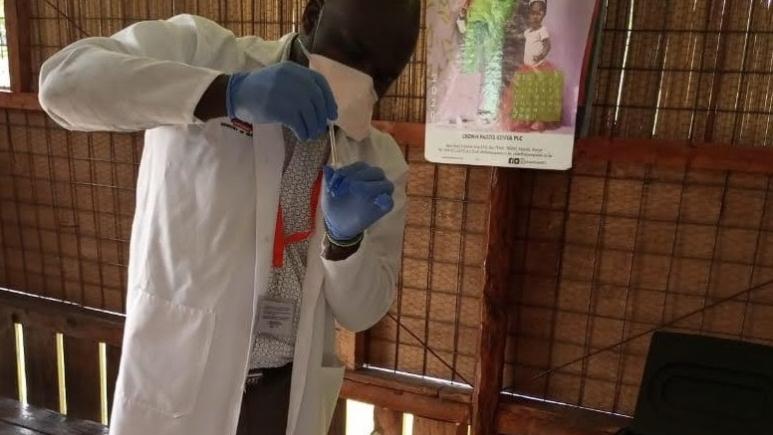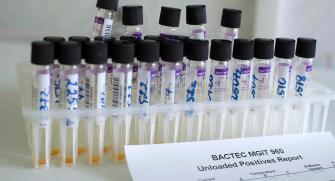FujiLAM rapid test: a new hope for the diagnosis of tuberculosis in people living with HIV?
According to the WHO Global Tuberculosis Report 2022 (1), 10.6 million people developed the disease in 2021, a 4.5% increase from 2020, and 1.6 million people died of TB, including 187,000 among people living with HIV.
An under-diagnosed disease needs a context-specific test
And these already eloquent figures are most certainly underestimated. Tuberculosis, especially among people living with HIV, remains largely under-diagnosed and therefore untreated. One of the reasons for this is the difficulty of access to diagnostic tests in resource-limited countries.
“Automated molecular diagnostics such as Xpert MTB/RIF in sputum perform well, explains Helena Huerga, but due to their cost, the need for electricity and the laboratory infrastructure required, they are not widely available in some resource-limited settings where, as a result, diagnosis still often relies on clinical signs or sputum analysis by microscopy. In addition, sputum production in people living with HIV is a real problem. In our study, around 50% of the patients were able to produce sputum spontaneously, and less than 13% among those at risk of TB due to their advanced HIV disease, i.e., with a CD4 count ≤200 cells per μL or WHO clinical stage 3 or 4, but without symptoms."
Prefer tests based on urine samples
The so-called LAM (lipoarabinomanna) tests, which look for a biomarker in urine samples, are emerging as a promising alternative. The WHO recommends the routine use of AlereLAM (Abbott) for people living with HIV with signs and symptoms of TB without the need for a CD4 count, and in those who are severely immunosuppressed irrespective of symptoms (hospitalized with advanced HIV disease, or ambulatory with CD4 <100 cells/µL). To date, this is the only one test commercially available. Only 13 of the 37 countries most affected by this infectious disease use this test routinely. Reasons for not adopting this test include the need for more operational research and local data, and for a more sensitive test (2).
The new rapid test, FujiLAM, provides an potential answer to this last point since the study conducted by Epicentre and MSF, with the support of ANRS, demonstrates the better sensitivity of this test compared to the AlereLAM test for diagnosing tuberculosis in people living with HIV.
Between August 2020 and September 2021, approximately 1500 patients were recruited from four sites with high HIV and TB prevalence:
- Mbarara Regional Referral Hospital in Uganda,
- Homa Bay District Hospital in Kenya,
- Alto Maé Health Center in Maputo, Mozambique,
- Eshowe Gateway Clinic and District Hospital in Eshowe, KwaZulu-Natal, South Africa.
The study highlights a sensitivity of FujiLAM of 60% compared with the microbiological reference standard, versus 40% for AlereLAM. The difference in the sensitivity remains across the CD4 counts cutoffs. Among patients with a CD4 count of less than 200 cells per μL, FujiLAM sensitivity was 69% versus AlereLAM 52%. Among patients with a CD4 count of 200 cells per μL or higher, FujiLAM had a sensitivity of 47% versus 24% for AlereLAM. Both tests demonstrate similar specificity of 86% and 87%.
Many promises and one caveat
This study, the first of its magnitude with the FujiLAM test, suggests the potential role of FujiLAM for the diagnosis of TB in HIV-positive patients. However, upon completion of the analyses, FIND, who supplied the tests and who also conducted diagnostic study on this test, and the manufacturer of FujiLAM reported disparities in the diagnostic performance of the test by lot. The issue of batch variability will need to be resolved prior to clinical use of the test, further delaying the issuance of new recommendations and widespread use.
Will this more sensitive test for diagnosing tuberculosis ever be used in the clinic?
“The study results on the feasibility and acceptability of using the FujiLAM test had been published in the Journal of clinical tuberculosis and other mycobacterial diseases in May 2022 (3). It was shown that 94% of health professionals found the FujiLAM test easy to perform overall. "Furthermore, urine sampling is well accepted and often preferred to sputum sampling in patients," adds the epidemiologist.
In summary, the FujiLAM test is
- rapid and easy to use,
- does not require sputum,
- can be offered as close to the patient as possible,
- has a better sensitivity than the AlereLAM test.
However, until the problems of batch variability are resolved, its implementation cannot be considered.










